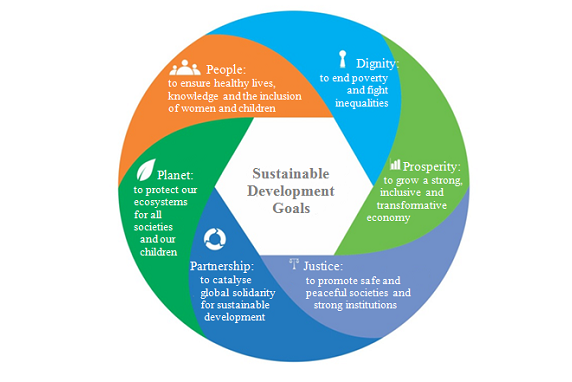The MDGs: Where Are They Now?
Eight goals, 15 years and a world of difference.
The Millennium Development Goals (MDGs) have sat on the mantle of humanitarian discourse for the world’s key leaders and development organisations since 2000. But with less than one year to go before their expiry date, what are the successes so far and the challenges still to be faced post-2015?
Each MDG includes a series of targets which cannot be done justice in this blog. For a more detailed snapshot, you can read the United Nations (UN) MDG Report 2014 here.
But here’s a summary…
1. Halve extreme poverty and hunger
Key success: From 1990-2010, the world halved extreme poverty from 36% to 18%. China led the charge, dramatically decreasing extreme poverty from 60% to 12% of its population.
Key challenge: Sub-Saharan Africa’s extreme poverty rate only reduced by 8%, from 56% to 48%. And today, 32.9% of people living in extreme poverty come from India. Despite narrative to the contrary, it’s a country where focus is still needed.
2. Achieve universal primary education
Key success: Developing countries saw primary school enrolments grow 7% between 1990-2010. Sub-Saharan Africa showed the greatest improvement, increasing enrolments by 18%.
Key challenge: One in 10 children of primary school age were still out of school in 2012. Rapid population growth, armed conflict, girls living in rural areas and children with a disability are also more likely to drop out of school.
3. Promote gender equality and empower women
Key success: In 2012, all developing regions achieved, or were close to achieving, gender parity in primary education.
Key challenge: The percentage of female employees in non-agricultural wage employment has only increased 5-10% in Southern Asia, Western Asia and Sub-Saharan Africa. Northern Africa’s 19% of women working in non-agricultural employment in 1990 had shown no improvement by 2012.
4. Reduce child mortality by two-thirds
Key success: The child mortality rate has dropped by almost half between 1990-2012, from 99 deaths in 1,000 live births to just 53 deaths.
Key challenge: Globally, four out of every five deaths of children under the age of five continue to occur in Sub-Saharan Africa and Southern Asia. At the current rate, it will take until 2028 to reach this goal globally.
5. Improve maternal health
Key success: By 2013, maternal mortality rates dropped 53% for women aged 15-49.
Key challenge: The maternal mortality ratio in developing regions in 2013 is still 14 times higher than that of developed regions.
6. Combat HIV/AIDS, malaria and other diseases
Key success: The HIV incidence rate per year dropped 40% in developing regions. The malaria and tuberculosis targets are within reach by the end of 2015. Between 2000-2012, increased malaria interventions led to a 42% decline in malaria mortality rates globally. And between 1995-2012, tuberculosis treatment saved 22 million lives.
Key challenge: The UN claims there are still too many new cases of HIV infection with 2.3 million cases recorded between 2001-2012.
7. Ensure environmental stability
Key success: Over two billion people have gained access to an improved source of drinking water and improved sanitation since 1990.
Key challenge: 748 million people still draw their water from an unimproved source and one billion people still practice open defecation. Open defecation is most prevalent in Southern Asia (India), Oceania and Sub-Saharan Africa. One-third of urban residents in developing regions still live in slums.
8. Develop a global partnership on development
Key success: Official development assistance stood at $134.8 billion in 2013, the highest level ever recorded. The use of modern information and communications technology continues to grow with almost three billion people accessing the internet and seven billion using mobile phones.
Key challenge: The debt burden of developing countries is much lower than in 2000, but is not reducing further, remaining stagnant at 3% of export revenues.
According to the UN Deputy General, Ban Ki-moon:
While insufficient and uneven, progress has been remarkable. Only two short decades ago, close to 40 per cent of the population of the developing world lived in extreme poverty, and the notion of poverty eradication seemed inconceivable. Following profound and consistent gains, we now know that extreme poverty can be eradicated within one more generation. The Millennium Development Goals have greatly contributed to this progress, and have taught us how Governments, business and civil society can work together to achieve transformational breakthroughs.
Action 2015 – the way forward
The post-2015 development process is well underway. In July 2014, the Open Working Group of the General Assembly on Sustainable Development Goals developed a set of 17 goals with an associated 169 targets. In December 2014, Ban Ki-moon presented his own synthesis report entitled The Road to Dignity by 2030 in an effort to keep the new Sustainable Development Goals (SDGs) “action-oriented, concise and easy to communicate, limited in number, aspirational, global in nature and universally applicable to all countries.”
The Road to Dignity by 2030, which can be read here, synthesises the 17 goals of the Open Working Group into six key elements, as outlined below:

Should the SDGs follow the above approach, one thing is certain – the next 15 years will have a greater emphasis on eradicating financial exclusion, one of the root causes of poverty in the developing world.
Mahmoud Mohieldin, Corporate Secretary and President's Special Envoy of The World Bank Group, talks about harnessing the productive potential of every individual: “One sure way to achieve this entails allowing people to define their own future, and providing them with the opportunity to do so.”
Give people living in poverty an opportunity: help provide small loans today.
Sources:
http://www.un.org/millenniumgoals/2014%20MDG%20report/MDG%202014%20English%20web.pdf
http://www.un.org/en/ga/search/view_doc.asp?symbol=A/69/700&referer=http://www.un.org/en/documents/&Lang=E
http://blogs.worldbank.org/developmenttalk/promise-financial-inclusion
At Opportunity International Australia, Stephanie Hristovska is the Communications Coordinator, supporting the organisation in a range of communications activities.